You might be in the situation where you are selling multiple products and have integrated with a payment processor (such as Stripe/Digistore24/Paypal etc.) using Thrive Automator.
Let’s say we want to match three different Digistore24 products with 3 different Thrive Apprentice courses, so that:
|
If: |
Then: |
|
Someone purchases product A |
They get access to Thrive Apprentice Course 1 |
|
Someone purchases product B |
They get access to Thrive Apprentice Course 2 |
|
Someone purchases product C |
They get access to Thrive Apprentice Course 3 |
And all this should be done in a single automation.
If that’s the case, and you don’t want to create an automation for each of those products, you can create a single automation that pairs each product to be purchased via the payment service with a specific Thrive Apprentice product.
This can be done in two different ways:
-
If you want to do that, you will have to create an automation with the following structure:
Start trigger – Incoming Webhook
Action – Find or create user
Action – Grant access to product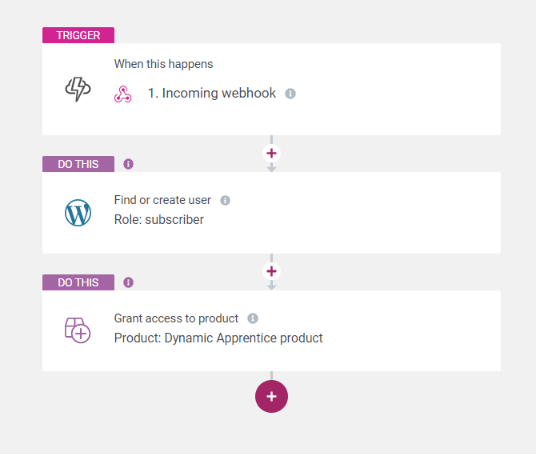
-
In this case, the structure of the automation will be this one:
Start trigger – Incoming Webhook
Action – Advanced Mapping
Action – Find or create user
Action – Grant access to product
As an example, I will use Digistore24 as the payment provider of choice, but the process will be similar for any service you’re choosing.
Here are some useful articles, in case you need more information on how to create a connection between your Thrive Themes website and a payment processor:
-
Connecting Your Thrive Themes Website to Stripe Using Thrive Automator
-
Connect Your Thrive Themes Account to PayPal Using Thrive Automator
-
Connecting Your Thrive Themes Website to ThriveCart Using Thrive Automator
-
Connecting Your Thrive Themes Website to Digistore24 Using Thrive Automator
In this article, we will take a look at both of the ways in which this can be done.
Method 1 – Providing the product ID on the incoming webhook and matching the product ID to the Thrive Apprentice Product identifier
For this method, you can use the product identifier of each Thrive Apprentice product and pair it with the product ID from the payment service you’ve integrated with.
The structure of the automation will be this one:

And let’s see how to set it up.
Start trigger – Incoming Webhook
Start by creating a new automation and naming it. Choose the “Incoming Webhook” trigger:

Go ahead and set up the webhook as usual (and as explained in articles such as this one).
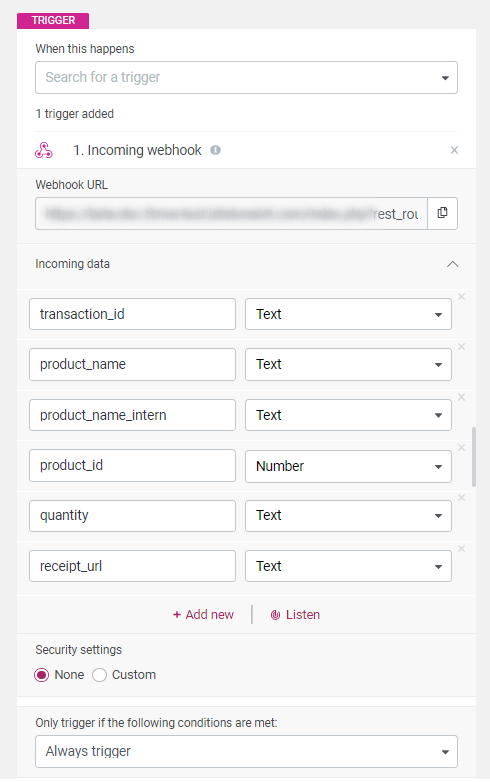
As you can see in the image above, using the “Listen” mode, I have mapped out the fields to be sent from Digistore24 when a purchase is being made.
What we need to do at this point is tell the automation that if a certain product is purchased via Digistore24, that should give our user access to a specific Thrive Apprentice product.
The automation should know that, upon receiving data that is specific to the Digistore24 product, it will pair it with a Thrive Apprentice product and thus provide the user access to the correct course.
Let’s remember what we’re trying to achieve with this automation by using an example:
|
If: |
Then: |
|
Someone purchases Digistore product 1 (with a specific product ID) |
They get access to Thrive Apprentice Course: Digital Marketing |
|
Someone purchases Digistore product 2 (with a specific product ID) |
They get access to Thrive Apprentice Course: Photography Basics |
|
Someone purchases Digistore product 3 (with a specific product ID) |
They get access to Thrive Apprentice Course: SEO Course |
As previously mentioned, we will use the product IDs. We will access Digistore24 and get the product IDs from there and pair them with the respective Thrive Apprentice course.
Before doing that, we will need to find the field from the Incoming Webhook that will bring in the Digistore24 product ID:

As you can see, this payment processor has generically labelled it as “product_id”, but please remember that this can be different according to each payment processor.
We will need to map out this field to Dynamic Mapping – “Apprentice Product”, so select that from the second field:
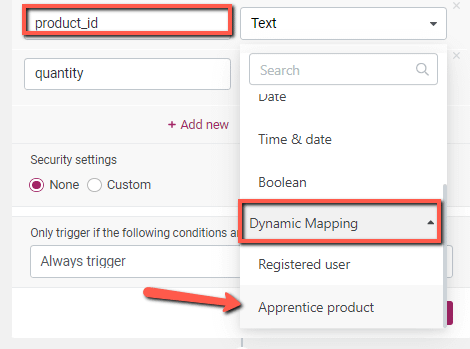
The start trigger is all set up, you can click on “Done”:
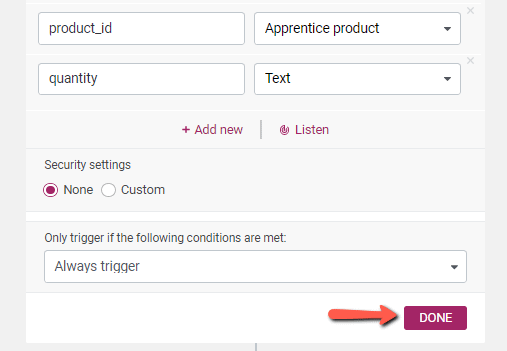
However, for this dynamic mapping to make sense, we will need to match the Digistore24 products to the Thrive Apprentice products.
To do that, I will access each of my Digistore24 products, get their product ID, and insert that ID as the Thrive Apprentice product identifier.
For that, copy each Digistore24 Product ID to your clipboard:
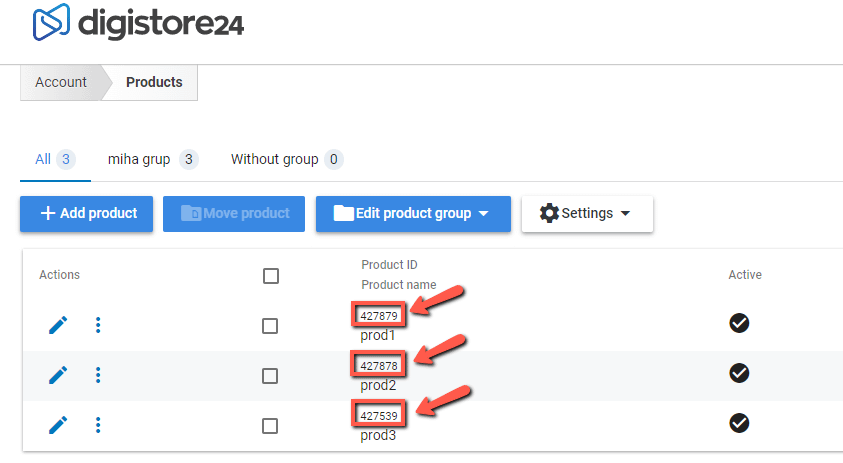
Then, access the Thrive Apprentice product that matches each Digistore24 product (in my case, as shown in the table above):
Go to the “Access requirements” section:
In the top right corner here, you will see the “Product identifier” section – this is where you have to paste in the Digistore24 product ID (so that we interconnect each Digistore24 product to each Thrive Apprentice course):
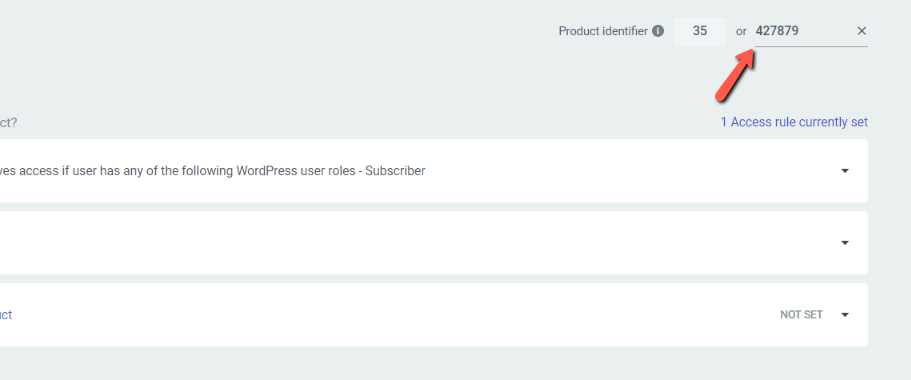
You can do the same for all the products that you want to pair, and you can then go back to your automation to continue setting it up.
Action – Find or create user
As the next action that should happen, I will choose the “Find or create user” one. This way, in case the person who has just purchased the product was already a user on my site, the system will look for them and will grant them access to the product.
In case they have not created an account on my site prior to this step, the automation will automatically create a user for them, and they will receive an email with the login information.
Again, set up the action by mapping out the fields as you wish. Then, click on the plus sign to add the next action:
Action – Grant access to product
As the last action, we will need to choose the “Grant access to product” one:
Choose the “Dynamic Apprentice product” option from the dropdown from where you have to select the product:
The automation will then be ready and, each time someone purchases one of your products set up in the payment processor, they will be granted access to the Thrive Apprentice product that matches.
Method 2 – Using Advanced Data Mapping to map any field to a specific product
This method is fairly similar, except for the fact that we will add one more step to the automation, in which we are using Advanced Data Mapping to create the matches.
The automation will be similar to the one used in the first method, and we will start with the “Incoming Webhook” start trigger.
Start trigger – Incoming Webhook
Create a new automation and name it. Choose the “Incoming Webhook” trigger:

Set up the webhook as usual (and as explained in articles such as this one).

Map out the fields to be sent from Digistore24 when a purchase is being made, using the “Listen” mode.
Here, as well, we will need to tell the automation that, if a certain product is purchased via Digistore24, that should give our user access to a specific Thrive Apprentice product.
|
If: |
Then: |
|
Someone purchases Digistore product 1 (named prod1) |
They get access to Thrive Apprentice Course: Digital Marketing |
|
Someone purchases Digistore product 2 (named prod2) |
They get access to Thrive Apprentice Course: Photography Basics |
|
Someone purchases Digistore product 3 (named prod3) |
They get access to Thrive Apprentice Course: SEO Course |
The automation should know that, upon receiving data that is specific to the Digistore product, it will pair it with a Thrive Apprentice product and thus provide the user access to the correct course.
I can make this happen using the product name (or any other variable that is specific to the Digistore24 product).
In the “Incoming Data” section, I already have a “Text” field that maps out the product name. This has been automatically added when using the “Listen” mode to add these fields:
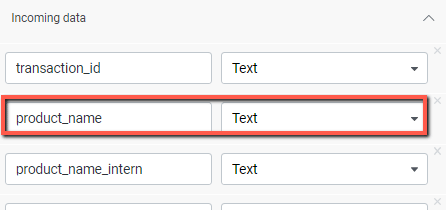
This will be helpful in the next step. For now, save this trigger by clicking on “Done”:
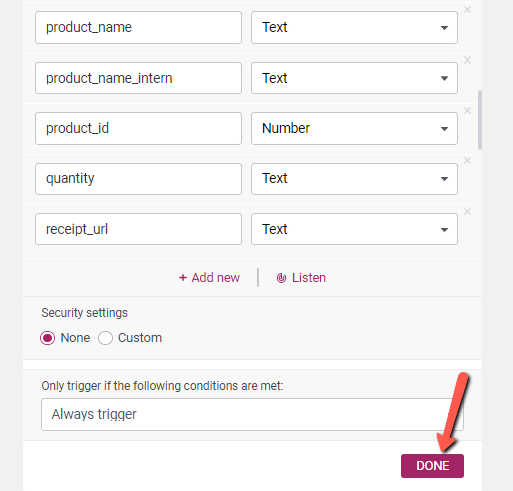
Action – Advanced data mapping
In the next step, we will need to create the connection between the Digistore24 products and the Thrive Apprentice products. This can be done using advanced data mapping, so go ahead and choose this one as the first action:
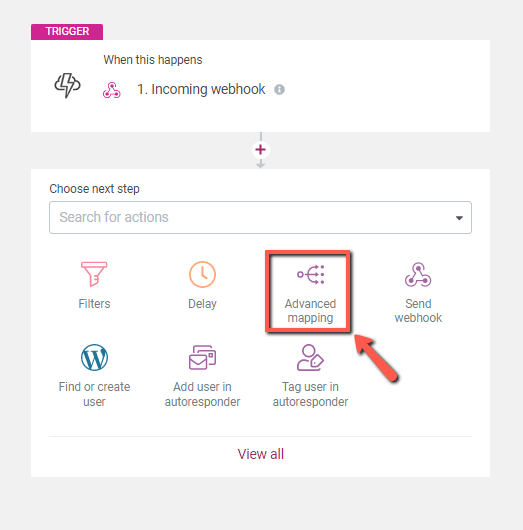
As the source, I will choose the “Product Name” (because, as previously mentioned, we will have to use any variable that is specific to the Digistore24 product):
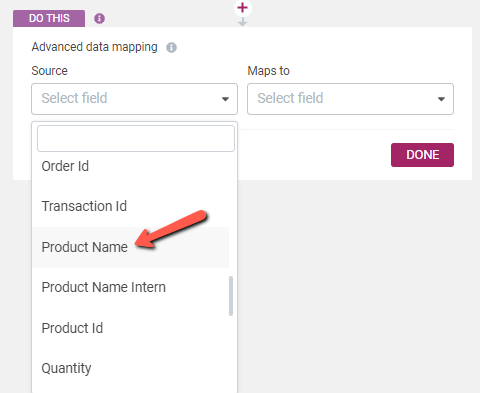
And map it out to “Apprentice Product”:

You will then be able to create the key-value matches. Before doing that, I will access each of my Digistore24 products and gather their product name:

Then, you can manually insert each of the product names in separate fields and, for each product name, you will be able to choose the Thrive Apprentice product to match:
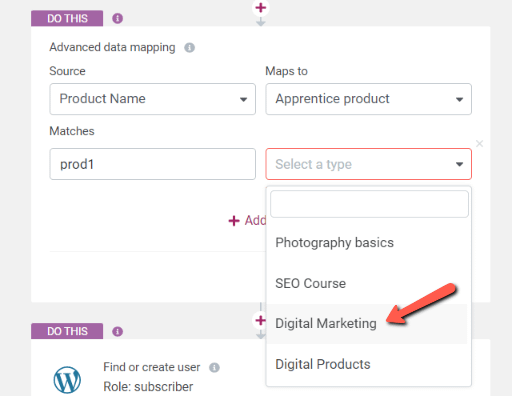
You can do the same for as many products as you’d like. For example, I have set up three Digistore24 products and, each of them should give users access to different courses.
This is what my setup will look like:
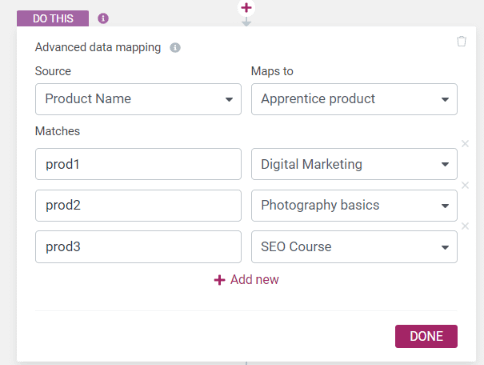
Click on “Done” to save the action:
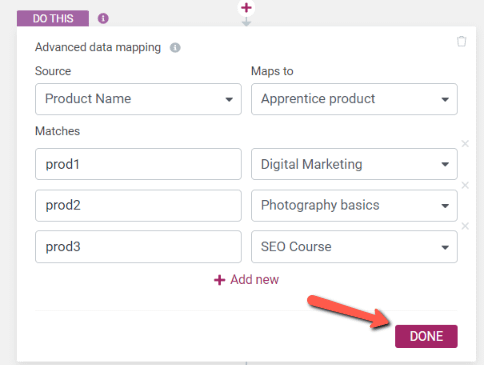
Action – Find or create user
For the next two actions, we will proceed just like in the case of the first method. The action following the “Advanced data mapping” step will be the “Find or create user” one:

Again, set up the action by mapping out the fields as you wish. Then, click on the plus sign to add the next action:
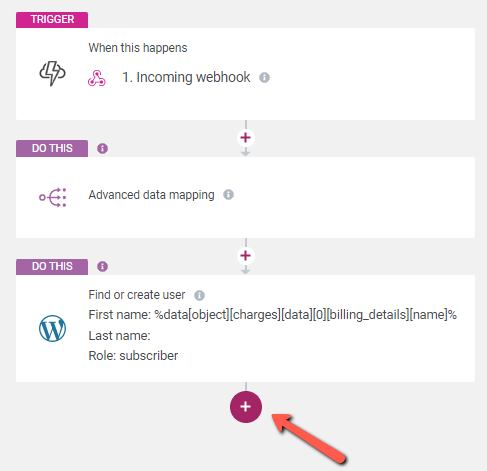
Action – Grant access to product
The last action will be the “Grant access to product” one:
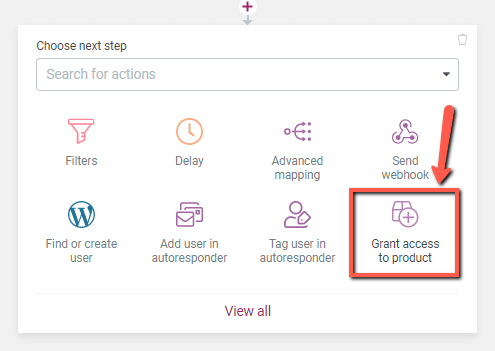
Choose the “Dynamic Apprentice product” option from the dropdown from where you have to select the product:
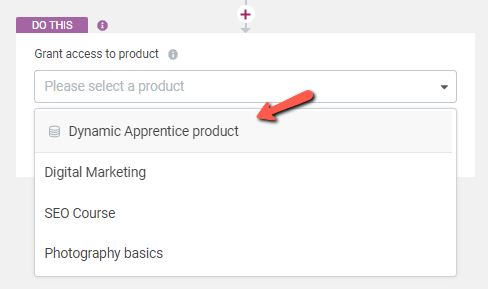
The automation will then be ready, and you can publish and save it.
In this case as well, as a result, you now have an automation that grants users that have purchased different products via Digistore24 access to different Thrive Apprentice products.
Hopefully, this article was useful. Make sure to check out our entire knowledge base for more information about various Thrive Automator features.
Also, don’t forget to leave a smile below if the article was useful 😄